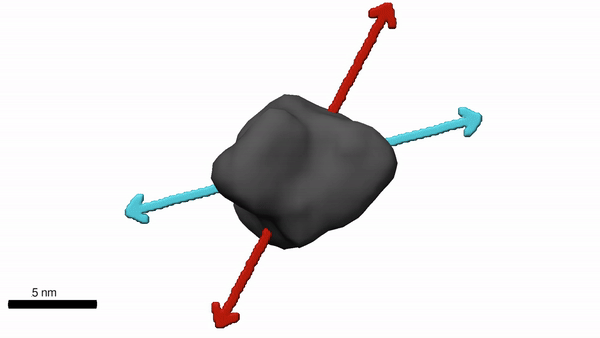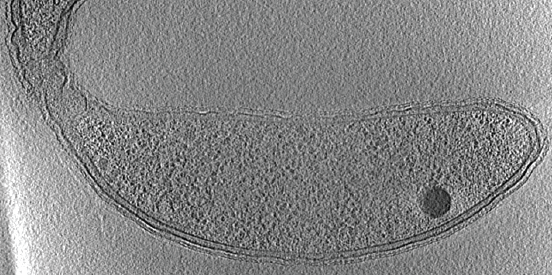Super-resolved cryogenic correlative light and electron microscopy
Tackling the specific labelling problem for cryogenic electron tomography
Cryogenic electron tomography (CryoET) is a powerful approach for revealing subcellular architecture. However, due to the susceptibility of biological material to radiation damage, the majority of biomolecules of interest cannot be identified directly in tomographic reconstructions. The size limit of what can be identified, and therefore averaged to produce high-resolution structural information, is constantly being pushed to ever smaller structures. However, the limit is currently at a point where the vast majority of the proteome cannot be identified. A good review of this topic can be found in Christopher Russo's article "Cryomicroscopy in situ: what is the smallest molecule that can be directly identified without labels in a cell?"
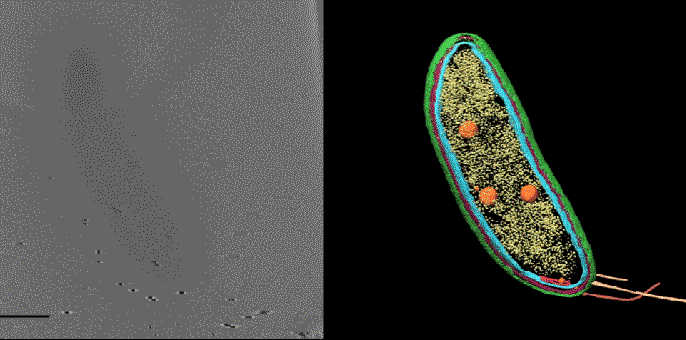
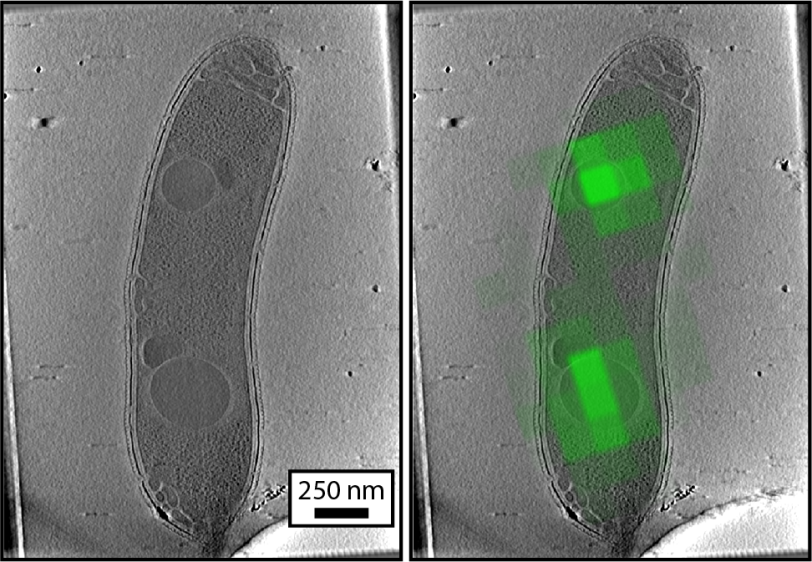
In order to overcome this limitation, we turn to fluorescence microscopy. Fluorescent labelling with genetically encodable labels, such as fluorescent proteins, allows for the identification of a protein of interest. Unfortunately diffraction-limited fluorescence microscopy is roughly two orders of magnitude lower resolution than CryoET. The example to the left shows diffraction-limited cryogenic correlative light and electron microscopy of the polymerase responsible for forming the PHB granules in C. crescentus. See our article "The Biogenesis of Bacterial PHB Granules" for more information. This diffraction limited information can be used to assign specific proteins to general regions of the cell, but often higher resolution information is desired, and for this we turn to super-resolution fluorescence microscopy.
There are many different forms of super-resolution that one could choose to employ. We have had the most success with single-molecule variants of super-resolution. All forms of single-molecule super-resolution fluorescence microscopy, such as PALM, STORM, PAINT, etc., rely on the two key concepts shown to the right; localization and active control. Under cryogenic conditions the challenge is active control. Getting molecules that we can turn on and off under cryogenic conditions is challenging and still an area of active research within the group. However we have had some success with photoactivation as a mechanism of control. While the majority of photoactivatable labels used for room-temperature photoactivate poorly or not at all under cryogenic conditions, PAGFP and PAmKate remain efficiently photoactivatable.
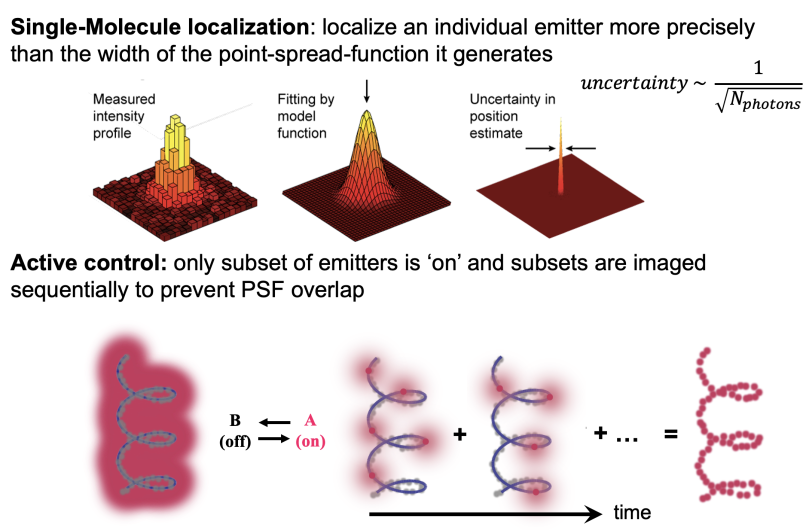
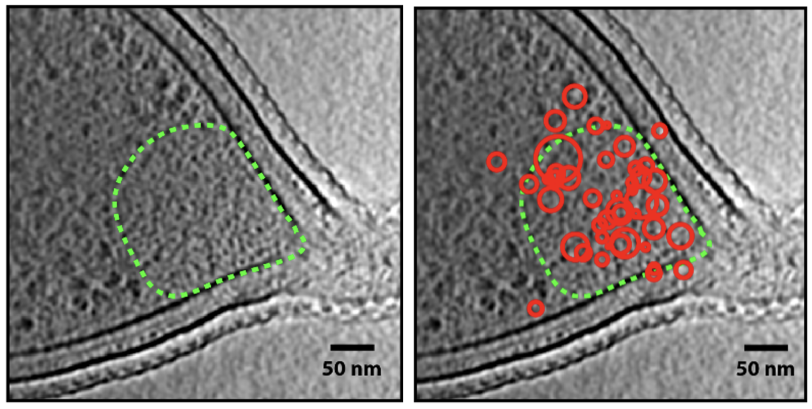
Combining cryogenic super-resolution fluorescence microcopy and CryoET it is now possible to take data like that shown to the left, in an approach called srCryoCLEM. The far left image shows a single slice of a CryoET reconstruction of a bacterial cell. We are looking at the polar end of the bacterium where a region has been highlighted with a dashed green line. This region is suspected to be filled with a phase separated protein known as PopZ, but PopZ is too small to identify with Cryo-ET alone. In the image to the right the locations of individual PopZ-PAmKate proteins have been identified by cryogenic super-resolution. Each circle gives a localization from a single molecule and the radius of the circle is our experimentally determined uncertainty.
Key Publications from our group:
FLUORESCENT LABELS:
Identification of PAmKate as photoactivatable under cryogenic conditions
Complicated cryogenic photophysics and new mechanisms of control demonstrated for mApple
CORRELATIVE METHODS:
Initial demonstration of srCryoCLEM
Limiting sample heating through the use of electron microscopy grids with metallic support films
EXCITING BIOLOGY USING srCryoCLEM:
ATP-responsive biomolecular condensates tune bacterial kinase signaling
REVIEWS:
Cryogenic Super-Resolution Fluorescence and Electron Microscopy Correlated at the Nanoscale

